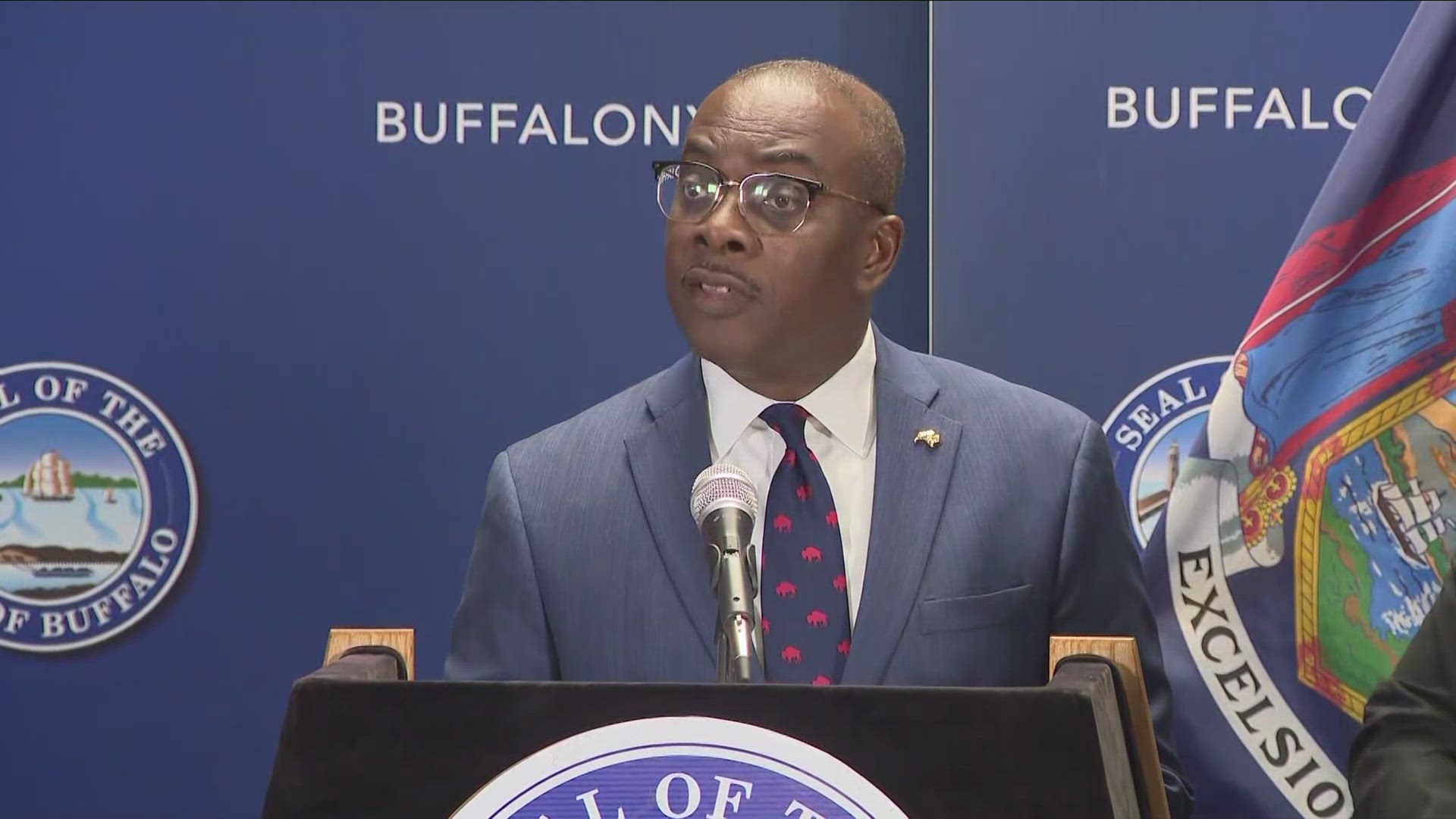BUFFALO, N.Y. — When asked by 2 On Your Side's Claudine Ewing to rate his performance after 19 years as Mayor, Byron Brown deferred to the public.
"As I am prepared to leave office after 19 plus years of service, it's really up to the people of Buffalo to judge me," Brown said.
Whether you're a fan or a detractor of Brown's, it can't be denied that in certain areas of Buffalo, the landscape looks different after 19 years.
There are more buildings downtown. There are marquee projects like Canalside, the Northland Corridor, Michigan Street African American Heritage Corridor, the Buffalo Medical Campus, and others.
A spokesperson for Mayor Brown says there has been $10B worth of economic investment into the city of Buffalo since 2012.
While there can always be debates over who championed the funding, or whose idea it was, at the end of the day, Byron Brown was the mayor at the time.
There is, however, data that supports the notion that under Brown's watch, key indicators of progress remained flat or even worsened.
"We see the poverty rate is only really decreasing by 2%, homeownership rates for black and white residents are actually a little bit lower than they were in 2006," said Andrea Ó Súilleabháin, executive director of the Partnership for Public Good.
"If you look at the median income, black residents are still only making about 60% of what a white person makes, and Latino residents are actually making less than 50% of what a white person makes," Ó Súilleabháin said. "So you see these core equity issues not making big progress.
According to a comparison of American Community Survey data from 2006 and 2023:
- Poverty decreased by 2.3% over Brown's 19 year tenure.
- 2006 - 29.9%
- 2023 - 27.6%
- Child poverty decreased 6% between 2006 and 2023
- 2006 - 42.9%
- 2023 - 36.9%
- White poverty increased by 2.6%
- 2006 - 18.4%
- 2023 - 21%
- Black poverty decreased by 7.6%
- 2006 - 36.5%
- 2023 - 28.9%
During the 19 years of Brown's administration, homeownership dropped by .9%. White homeownership decreased by 3%, while Black homeownership only decreased by 0.4%
Across the city, the median income increased by 10%, and when broken down, the percentages seem impressive, but the actual dollar amounts paint a bleaker picture. .
- White median income increased 13.8%
- 2006 - $55,217
- 2023 - $62,856
- Black median income increased 13.8%
- 2006 - 33,666
- 2023 - 39,179
- Hispanic/Latinx median income increased 30.9%
- 2006 - $22,630
- 2023 - $29,627
Regardless of median income increases, rent in Buffalo shot up 16% since 2006, with half of renters paying more than 30% of their income to rent.
"The census data tells one story, and the work of all of our partners tells another story," Ó Súilleabháin said. "These are the groups that are dealing with the consequences of a city hall not prioritizing poverty, fighting policies, a city hall not prioritizing healthy, livable neighborhoods."
The city of Buffalo has between 7,000 and 8,000 vacant lots, and it's a problem Ó Súilleabháin says the Brown administration never had a strong vision to fix.
She says the city charter has been overlooked for quite some time by city hall as well.
"Things like the Commission on Citizens Rights and Community Relations, which is a really important body in the city charter, is supposed to release an annual report each year on discrimination and police misconduct," Ó Súilleabháin. "I believe it has only released a handful of annual reports in Mayor Brown's 19 years."
The latest annual report issued by the Commission on Citizens Rights and Community Relations, according to the city of Buffalo website, was in 2020.
Ó Súilleabháin says that not everything is negative, and there are aspects of the Brown administration that deserve recognition.
"We have seen growth and diversity in our city, Mayor Brown does emphasize diverse hiring in City Hall," she said.
As for the next administration the Partnership for Public Good, which is a partnership of 358 community organizations across the Queen City, they are hoping a new administration is open to some of the policies they say the public wants implemented.
"I think the next year is critical, and even more so is once we have a long term mayor in place, the core issues that they have to address are child poverty, lead exposure, transforming neighborhoods, getting our housing stock back up to code," Ó Súilleabháin said.

